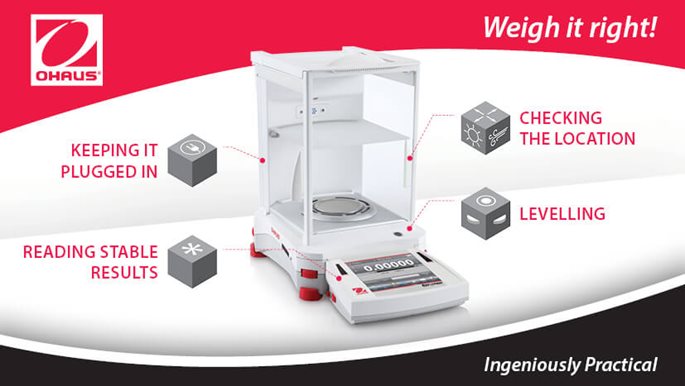
Weighing is one of the most basic tasks performed in the laboratory. That is why it is important we do not underestimate certain factors that can influence proper results. Incorrect usage or unsuitable conditions may cause errors, especially for semi-micro balances, that are used to weigh the lightest samples. OHAUS has been present on the market for over a 100 years and has always been concerned about the universal rules for good weighing as well as developing the perfect tools for that activity.
The four basic steps to follow: checking the location, keeping it plugged in, leveling and reading stable results.
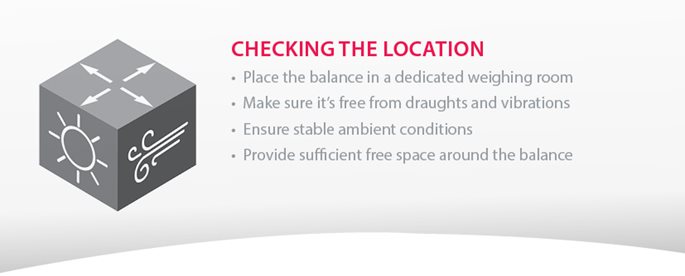 Checking the location
Checking the location - correct location of the balance in the working area will minimize the influence of the environment on the proper weighing results. Not only is direct sun light exposure not recommended, but the balance should also be placed away from any air flows (windows, doors, A/C devices or ventilators, including computer ones). Monitoring conditions in the room is crucial as every change in temperature or humidity can influence the weighing results. OHAUS AutoCal™ internal calibration system efficiently protects against this factor calibrating the balance automatically every time it senses a temperature change significant enough to influence the weighing results or every X hours, depending on the balance's model. Work place ergonomics is equally important, therefore, make sure there is enough space around the instrument to provide unobstructed use and sufficient work comfort.
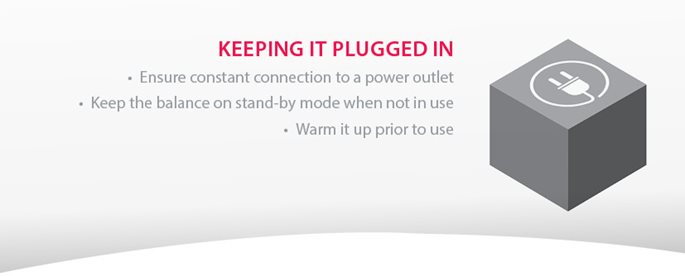
Once the optimal location of the balance is determined you might want to verify another step –
Keeping it plugged in. The balance should be connected to a power outlet and left on stand-by mode when not in use. When the balance is freshly installed, let it warm-up for some time in order to adjust to the working environment. Depending on the type of instrument, 3 to 12 hours are required for the balance to reach its optimal parameters. Providing constant electricity supply allows the electronic parts to be warmed-up enough for immediate operations.
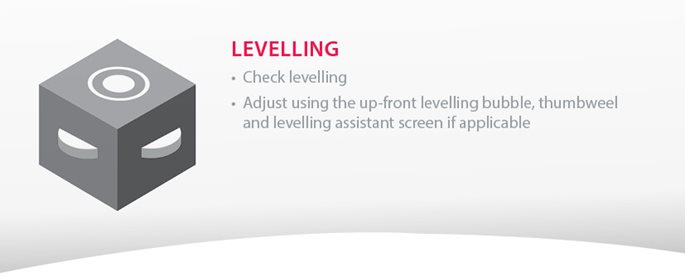
As very small things may affect accuracy,
Leveling is crucial prior to first use and the level position should be checked and adjusted periodically. Different devices offer various options to perform that task, in OHAUS Explorer the leveling is made easy using the up-front leveling bubble and leveling assistant screen. The user should turn the thumbwheel, depending on the location of the air bubble in the balances level.
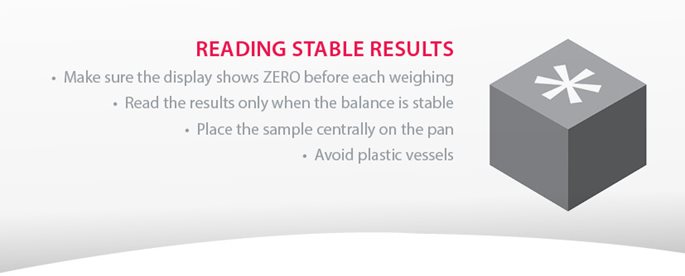
The last, but not least, point in the set of 4 basic main rules, is
Reading stable results. The first thing to remember is to make sure the balance shows ZERO before each weighing. Then the results can be checked only when the balance is stable. A small asterisk (on the left hand side of the display on Explorer) will confirm you are getting correct results.
The sample should be placed centrally on the pan to avoid off-center load errors. Moreover, it is worth remembering the smallest possible weighing vessels are the best, but plastic vessels are not recommended as they might be charged electrostatically and influence weighing results. Weighing hot or cold samples or weighing vessels might cause air flow affecting the results, hence the samples should also be of room temperature. The draftshield should remain closed and only be opened when necessary, as this ensures the climate in the weighing chamber will be as constant as possible. OHAUS offers automatic draftshield doors on certain balances. They can be programmed by using touchless sensors, so that you may open the door by simply waving your hand over the sensor. This makes weighing even more comfortable, as well as minimizing vibrations caused by touching the balance when opening and closing the draftshield door.
Among various factors that may disturb the weighing results, there is one more worth mentioning - electrostatic charges. In particular plastic containers in low humidity environments tend to cause a drifting display. To avoid errors, make sure to use electrostatic-free containers or eliminate the unwanted charges using an ionizer. Selected models of OHAUS balances are equipped with a built-in ionizer as standard. For all the others, a standalone device is available.
Keeping in mind the rules described above and implementing them will not take a lot of time or resources but will guarantee proper handling of the device. Consequently, it will help to fully appreciate the products, use them properly and it will guarantee the most accurate results. This small manual will be a great addition to OHAUS products, such as the new, excellent
Explorer® Semi-Micro balance.